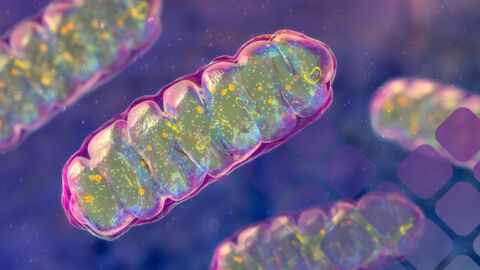The dysbiosis marker 3-(3-hydroxyphenyl)-3-hydroxypropionic acid (HPHPA), the predominant dihydroxyphenylpropionic acid isomer in urine, is also measured in the Organic Acids Test offered by MosaicDX. This marker was proven by Dr. William Shaw to be due to a combination of human metabolism and the metabolism by a group of Clostridia species, including but not limited to C. difficile.
HPHPA has been one of the most useful clinical markers in recent medical history. Treatment with metronidazole, vancomycin, or high doses of probiotics of individuals with high urinary values has led to significant clinical improvements or remissions of psychosis.
The biochemical role of Clostridia in altering brain neurotransmitters is due to the fact that Clostridia metabolites inactivate dopamine beta-hydroxylase, leading to an excess production of brain dopamine and reduced levels of the neurotransmitter norepinephrine. Excess dopamine is associated with abnormal or psychotic behavior. This imbalance can be demonstrated in the Organic Acids Urine Test by observing the ratio of the major dopamine metabolite, homovanillic acid (HVA), to that of the major norepinephrine metabolite, vanillylmandelic acid (VMA) when the Clostridia marker HPHPA is elevated. After treatment with metronidazole or vancomycin, HPHPA values return to normal along with normal ratios of HVA/VMA and normal behavior.
The biochemical role of Clostridia in altering brain neurotransmitters is due to the fact that Clostridia metabolites inactivate dopamine beta-hydroxylase, leading to an excess production of brain dopamine and reduced levels of the neurotransmitter norepinephrine. Excess dopamine is associated with abnormal or psychotic behavior. This imbalance can be demonstrated in the Organic Acids Urine Test by observing the ratio of the major dopamine metabolite, homovanillic acid (HVA), to that of the major norepinephrine metabolite, vanillylmandelic acid (VMA) when the Clostridia marker HPHPA is elevated. After treatment with metronidazole or vancomycin, HPHPA values return to normal along with normal ratios of HVA/VMA and normal behavior.
The highest value of HPHPA was measured in the urine of a young woman with first onset of schizophrenia. Treatment of Clostridia bacteria resulted in loss of auditory hallucinations. In autism, children with gastrointestinal Clostridia commonly exhibit aggressive behavior, agitation, obsessive compulsive behavior, and irritability. They may have very foul stools with diarrhea with mucus in the stools although some individuals may be constipated. Stool testing for Clostridia is usually of limited usefulness since most Clostridia species are considered probiotics or beneficial. There are about 100 species of Clostridia that are commonly found in the gastrointestinal tract. Only seven of these species are producers of HPHPA including C. sporogenes, C.botulinum, C. caloritolerans, C. angenoti, C. ghoni, C.bifermentans, C. difficile, and C. sordellii while C. tetani,C. sticklandii, C. lituseburense, C. subterminale, C.putifaciens, C. propionicum, C. malenomenatum, C.limosum, C. lentoputrescens, C. tetanomorphum, C.coclearium, C. histolyticum, C. aminovalericum, and C.sporospheroides do not produce compounds that are converted to HPHPA.
The same article by Dr. Shaw indicates that 3,4-dihydroxyphenylpropionic acid (DHPPA) is a marker for beneficial bacteria in the gastrointestinal tract such as Lactobacilli, Bifidobacteria, and E. coli. The exception is one species of Clostridia orbiscindens that can convert the flavanoids luteolin and eriodictyol, that occur only in a relatively small food group that includes parsley, thyme, celery, and sweet red pepper to 3,4-dihydroxyphenylpropionic acid. The quantity of C. orbiscindens in the gastrointestinal tract is negligible (approximately 0.1% of the total bacteria) compared to the predominant flora of Lactobacilli, Bifidobacteria, and E. coli (7). DHPPA is an antioxidant that lowers cholesterol, reduces proinflammatory cytokines, and protects against pathogenic bacteria. 2,3-Dihydroxyphenypropionic acid, a different isomer has been claimed to be a metabolite of Pseudomonas species but the literature indicates that this compound is formed by the in vitro action of these species on quinoline, a component of coal tar, a substance missing from the diet of virtually all humans.
References:
1. Shaw W. Increased urinary excretion of a 3-(3-hydroxyphenyl)-3-hydroxypropionic acid (HPHPA), an abnormal phenylalanine metabolite of Clostridia spp. in the gastrointestinal tract, in urine samples from patients with autism and schizophrenia. Nutr Neurosci. 2010 Jun;13(3):135-43.







